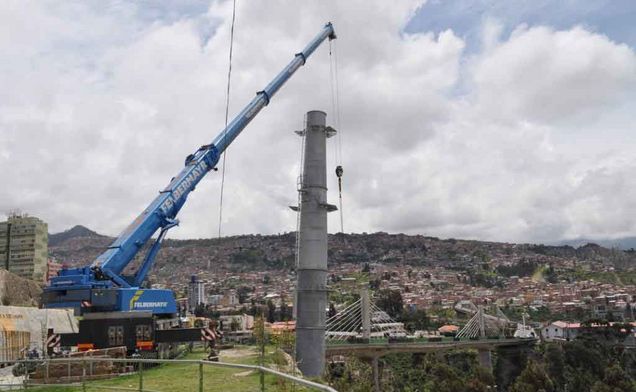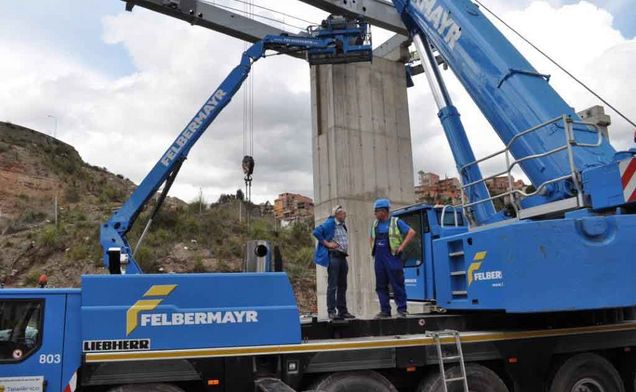Biggest urban cable car network ever installed
May 16, 2014 | Markus Lackner
The native crane companies described the project to erect the total of 67 supports for the three cable car connections as impossible. But for the employees of the Tyrolean Felbermayr subsidiary in Wörgl, the challenges seemed manageable from the start. “We have a lot of experience in handling mobile cranes at high altitude and in inaccessible terrain”, says Elmar Gsaller who has been working on extreme construction sites such as the Hintertux and Stubai glaciers in the Tirol for around 20 years, and who is involved in the project on-site as a crane driver. “But the successful start of the project was due in no small part to the spirit of cooperation with Doppelmayr”, comments Johann Lettenbichler, the responsible site manager working for Felbermayr: “The period from the initial meeting to the day on which the contract was ready for signing took just a few days.” When you remember that in principle, no foreign-registered cranes may be used in Bolivia, and that customs clearance can take weeks, that is quite remarkable.
Owing to positive experience with Liebherr cranes at high altitude, the decision for Bolivia went in favour of the Ehingen crane manufacturers. For travel to the construction site in Bolivia, 160, 130, and 90-tonne machines were shipped to Bremerhafen along with articulate telescopic and scissor platforms as well as telescopic forklift trucks, and were then driven on their adventurous way from the Chilean port of Iquique to the construction site in La Paz. But it was not only the 1000 kilometre journey ascending to 5000 metres above sea level that was difficult, the work on site also presented challenges: “The potholes are up to half a metre in depth, and nor should the bumps be underestimated”, says Gsaller. Furthermore, gradients of around 18 percent are not uncommon. “For automatic gearboxes, this is hard work, and every now and again we had to let them cool down.”
But it is not only the road conditions that present a challenge; people and technology alike struggle to cope with the low air pressure. This means that not only is the operation of diesel engines problematical at this altitude, the workers also find it difficult to adapt to the unwonted conditions at 4000 metres above sea level. For example some of the fitters complained of headaches and were brought to hospital where they were given oxygen for several days. And others, for their part, flew straight home because they were unable to cope with the altitude sickness. “The human body is slow to adapt to the low air pressure”, says Gsaller, describing his experiences. For him and his two colleagues, however, that was never a serious problem at any point. “We are Tyrolean”, he says jokingly with an unmistakable dialect.
The work to erect the first cable car connection started in the autumn of 2013. This first connection was opened by Bolivia’s president, Evo Morales in May. It connects the cities of La Paz and El Alto and is therefore contributing to major decongestion of the over-crowded road network. The two other lines are to be completed by the end of 2014.
















